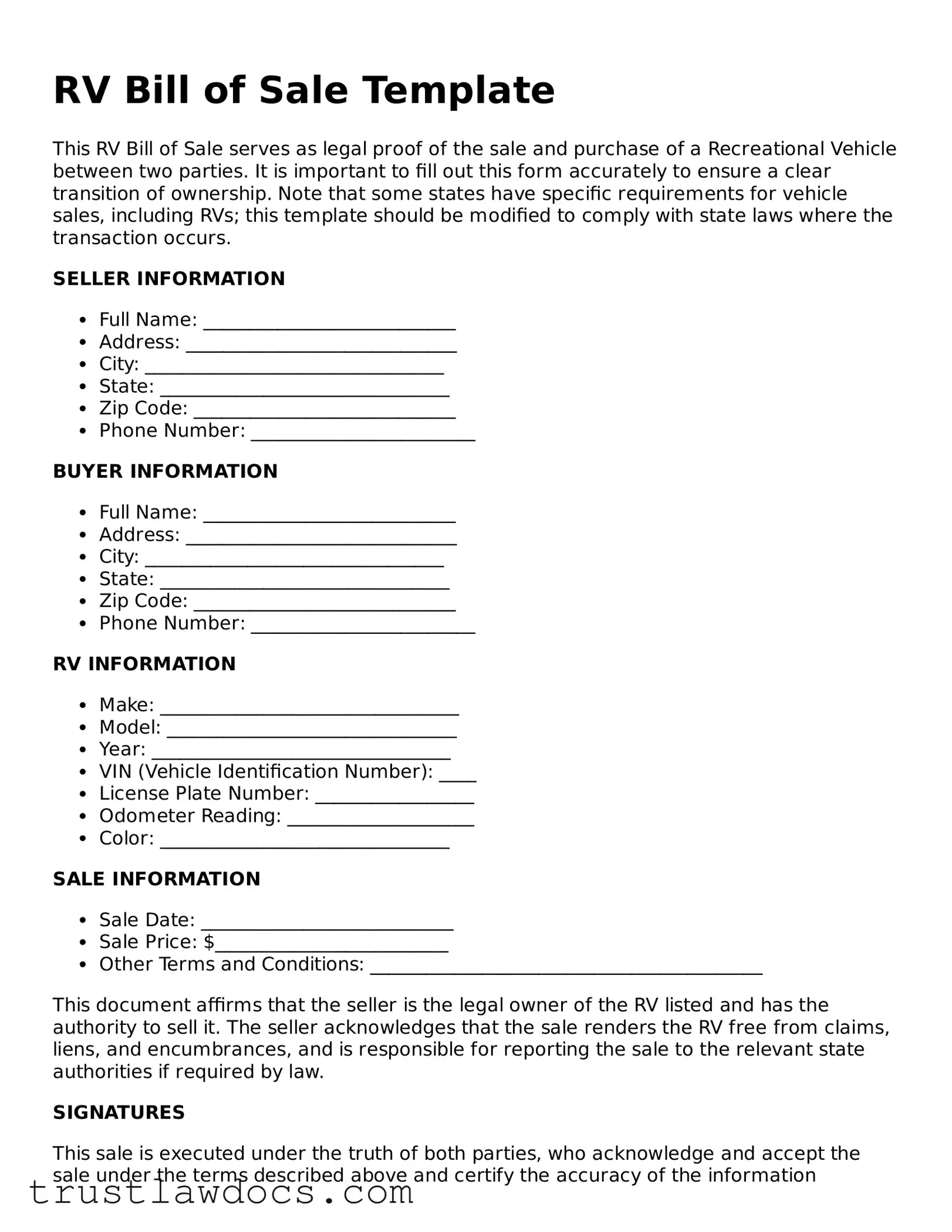What is an RV Bill of Sale?
An RV Bill of Sale is a legal document that records the sale and purchase of a Recreational Vehicle (RV) between two parties. It serves as proof of transfer of ownership and outlines details like the sale price, description of the RV, and personal information of the buyer and seller. This document is pivotal in establishing a legal transaction and can be used for registration, tax, and other legal purposes.
Why is an RV Bill of Sale important?
The importance of an RV Bill of Sale lies in its role as a binding record of the sale. It protects both buyer and seller by documenting the specifics of the transaction, thereby preventing future disputes over ownership or terms of sale. For the buyer, it’s crucial for the registration of the RV, and for the seller, it provides proof of relinquishing ownership, potentially absolving them from liability related to the RV’s future use.
What information should be included in an RV Bill of Sale?
A comprehensive RV Bill of Sale should include the following information: the date of sale, the names and addresses of both the buyer and the seller, a detailed description of the RV (including make, model, year, and Vehicle Identification Number), the sale price, method of payment, and signatures of both parties involved. Some states may require the Bill of Sale to be notarized.
Is a notarized RV Bill of Sale required?
Whether a notarized RV Bill of Sale is required depends on the state where the transaction occurs. Some states mandate notarization as part of the legal process, while others do not. It's advisable to check the specific requirements of your state or consult with a legal professional to ensure compliance with local laws.
Can I create an RV Bill of Sale myself?
Yes, you can create an RV Bill of Sale yourself. There are templates available that can guide you in including all the necessary information. However, it’s important to ensure that your document complies with state laws and includes all required details. For a document with legal significance, seeking legal advice or using a professionally prepared template may be beneficial to ensure accuracy and compliance.
What happens if you don’t use an RV Bill of Sale?
Not using an RV Bill of Sale can lead to numerous complications. For the buyer, it may create challenges in registering the vehicle or proving ownership. For the seller, the absence of a Bill of Sale can leave them vulnerable to future liabilities or disputes over warranty or condition. It's a crucial piece of documentation that provides security and clarity for both parties involved in the transaction.
How does an RV Bill of Sale benefit the buyer?
For the buyer, an RV Bill of Sale acts as critical evidence of their new ownership, key to registering the vehicle in their name. It also provides detailed information about the transaction, including the purchase price, which can be useful for tax purposes or valuation. Importantly, it can offer protection if any question arises regarding the vehicle's condition or the terms of the sale that were agreed upon.
